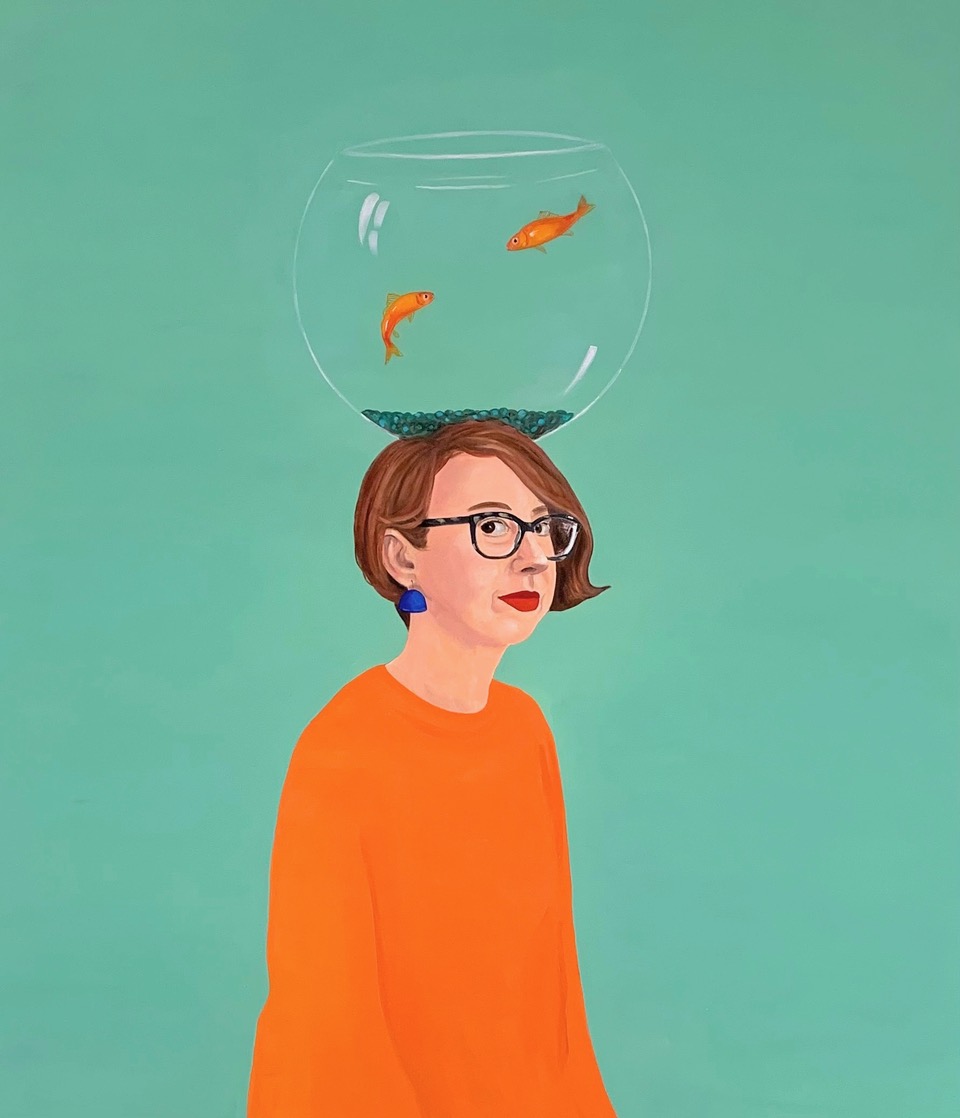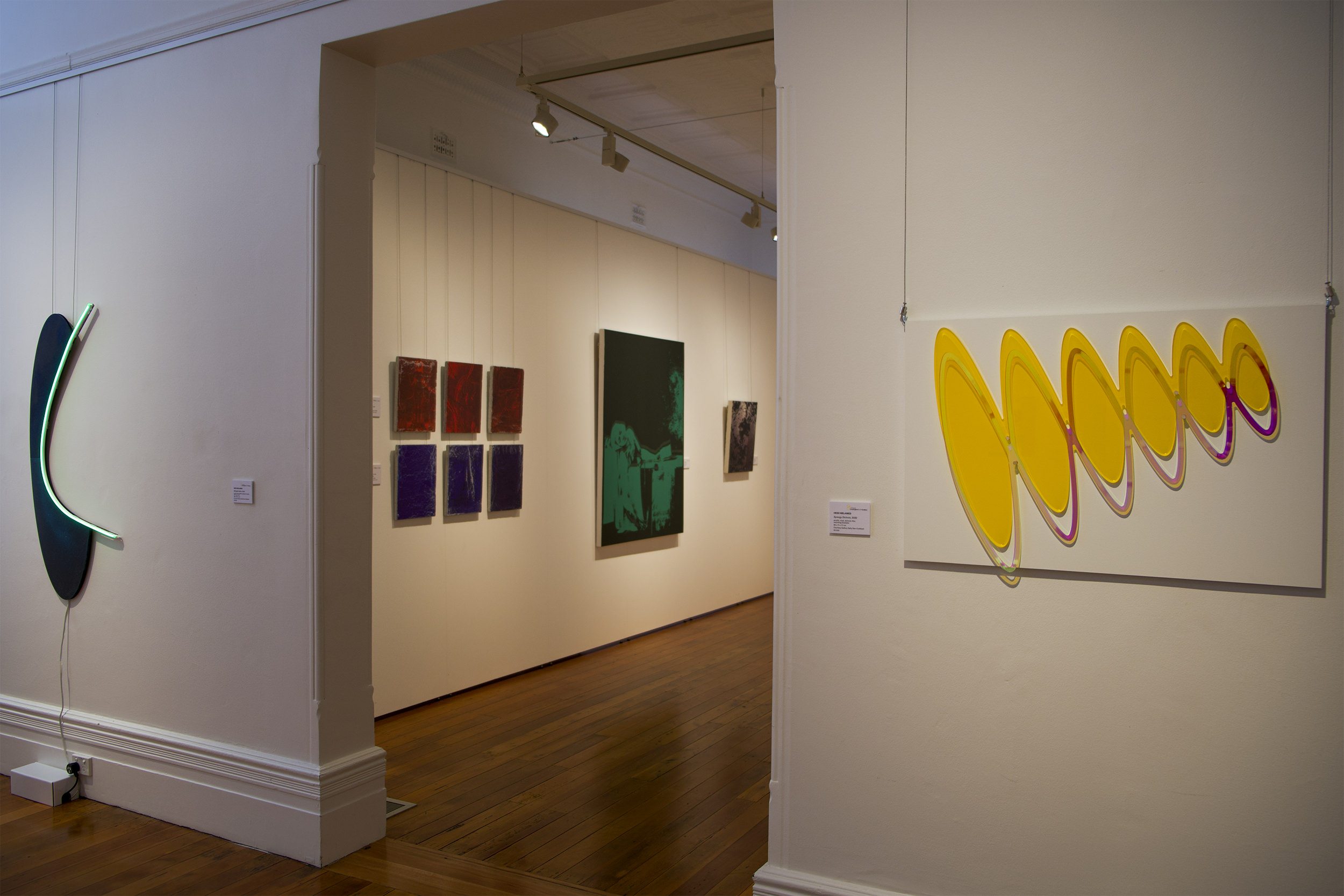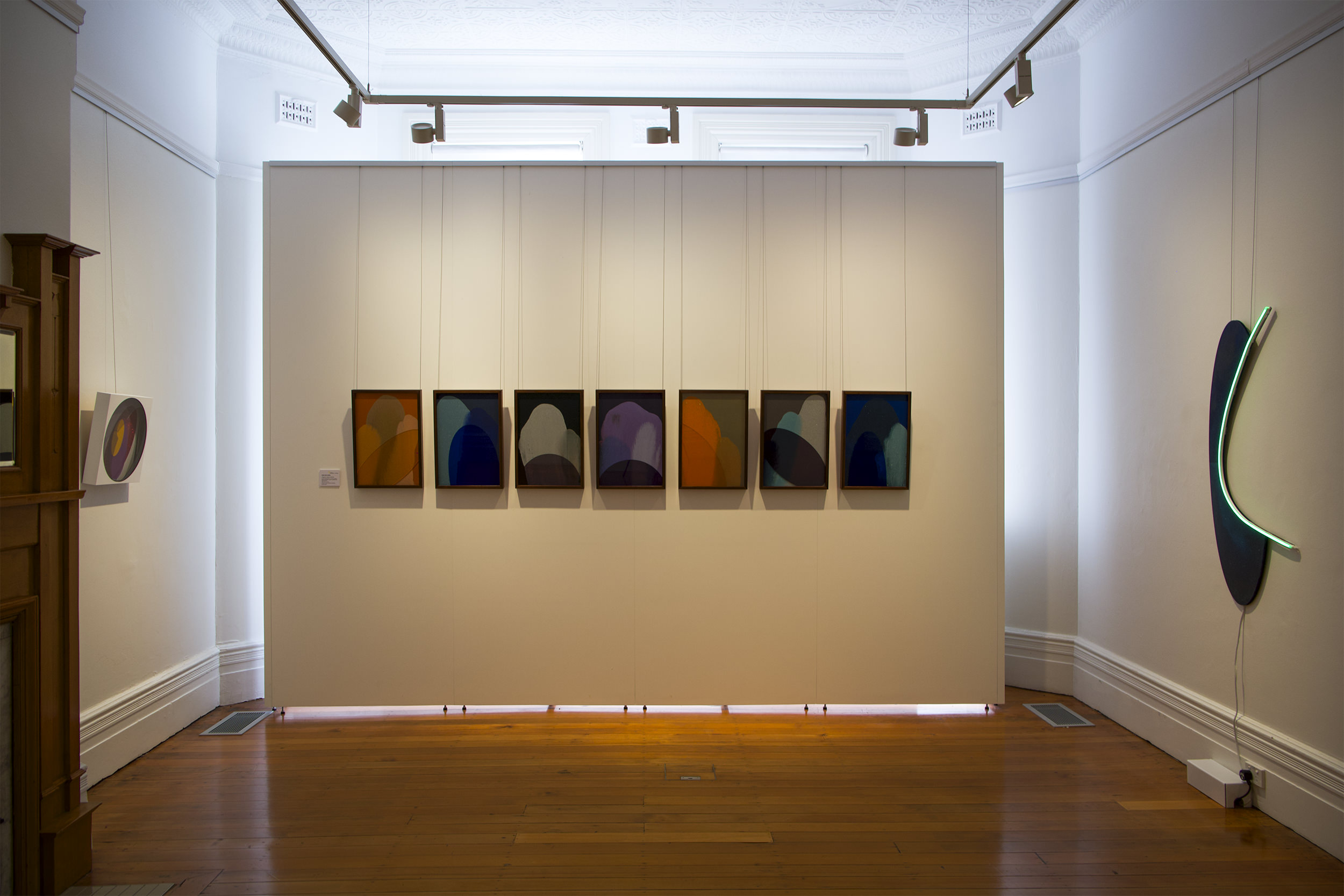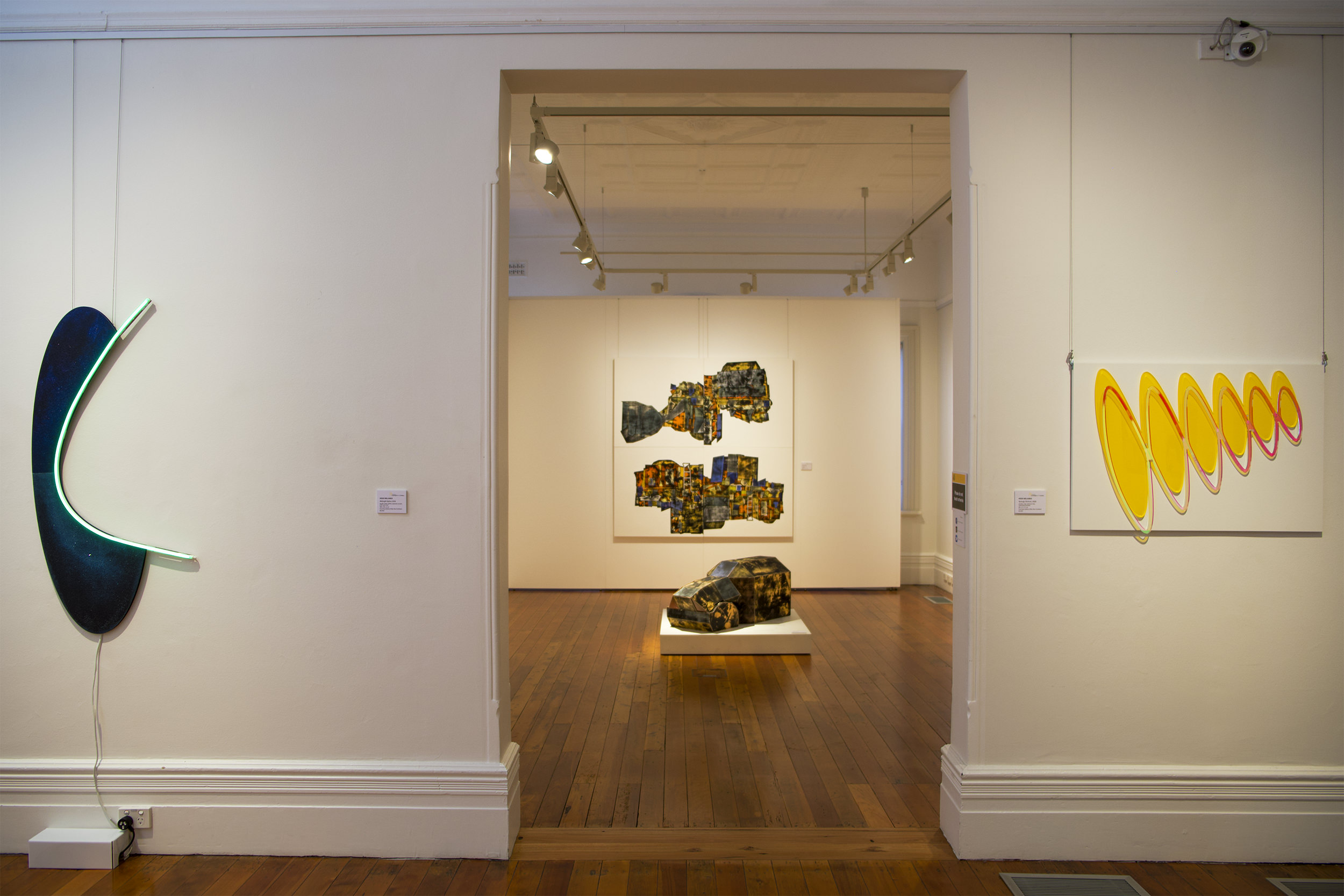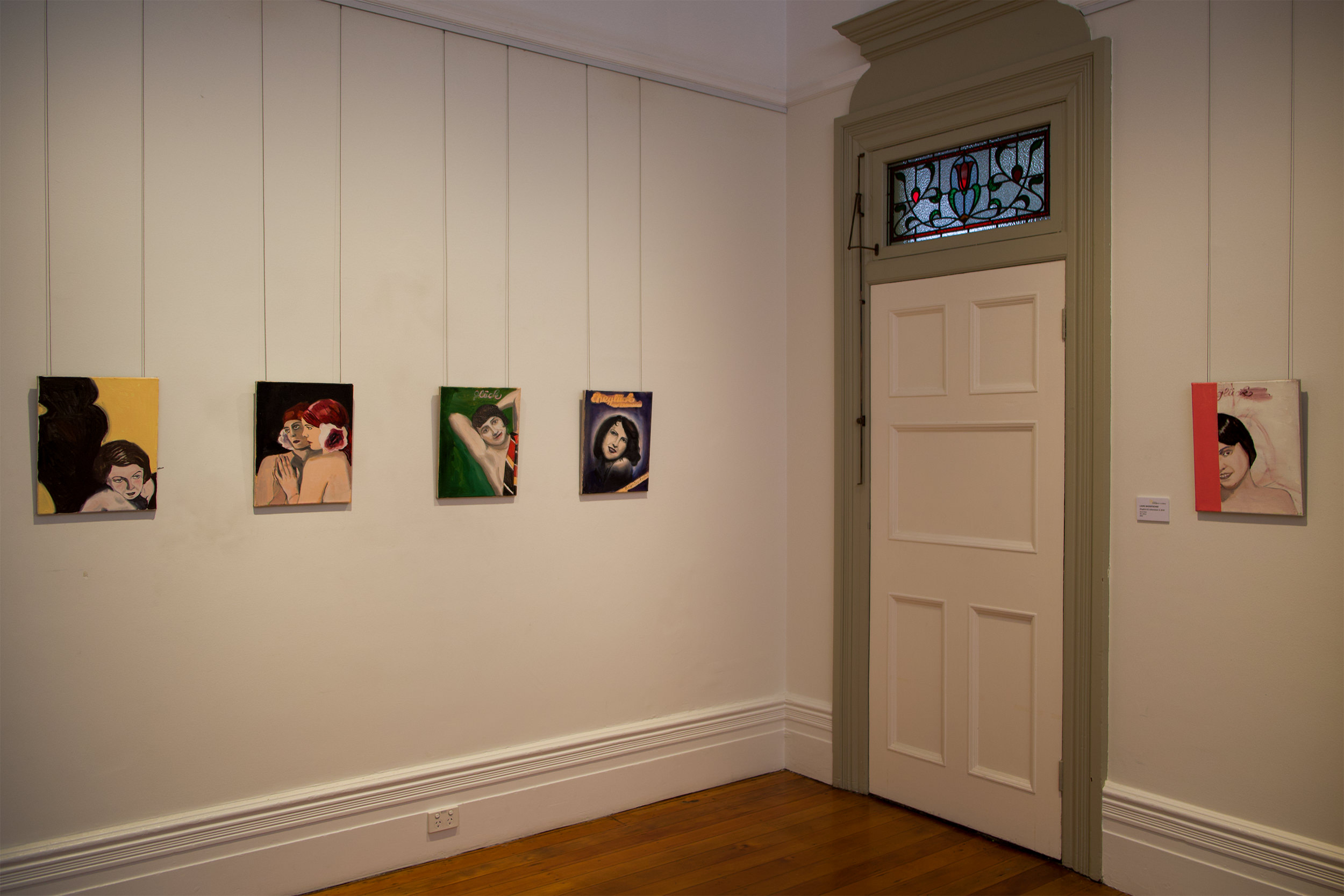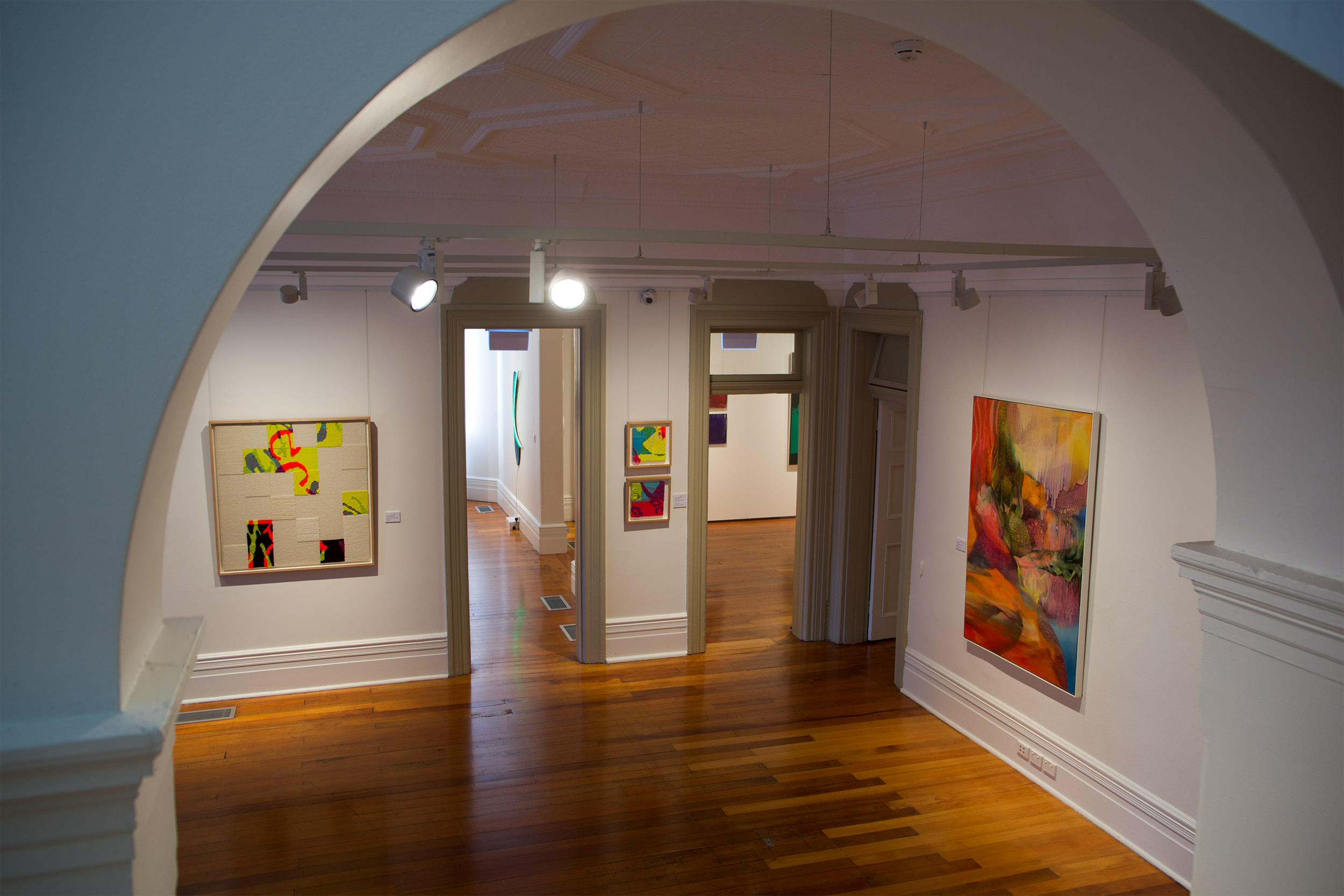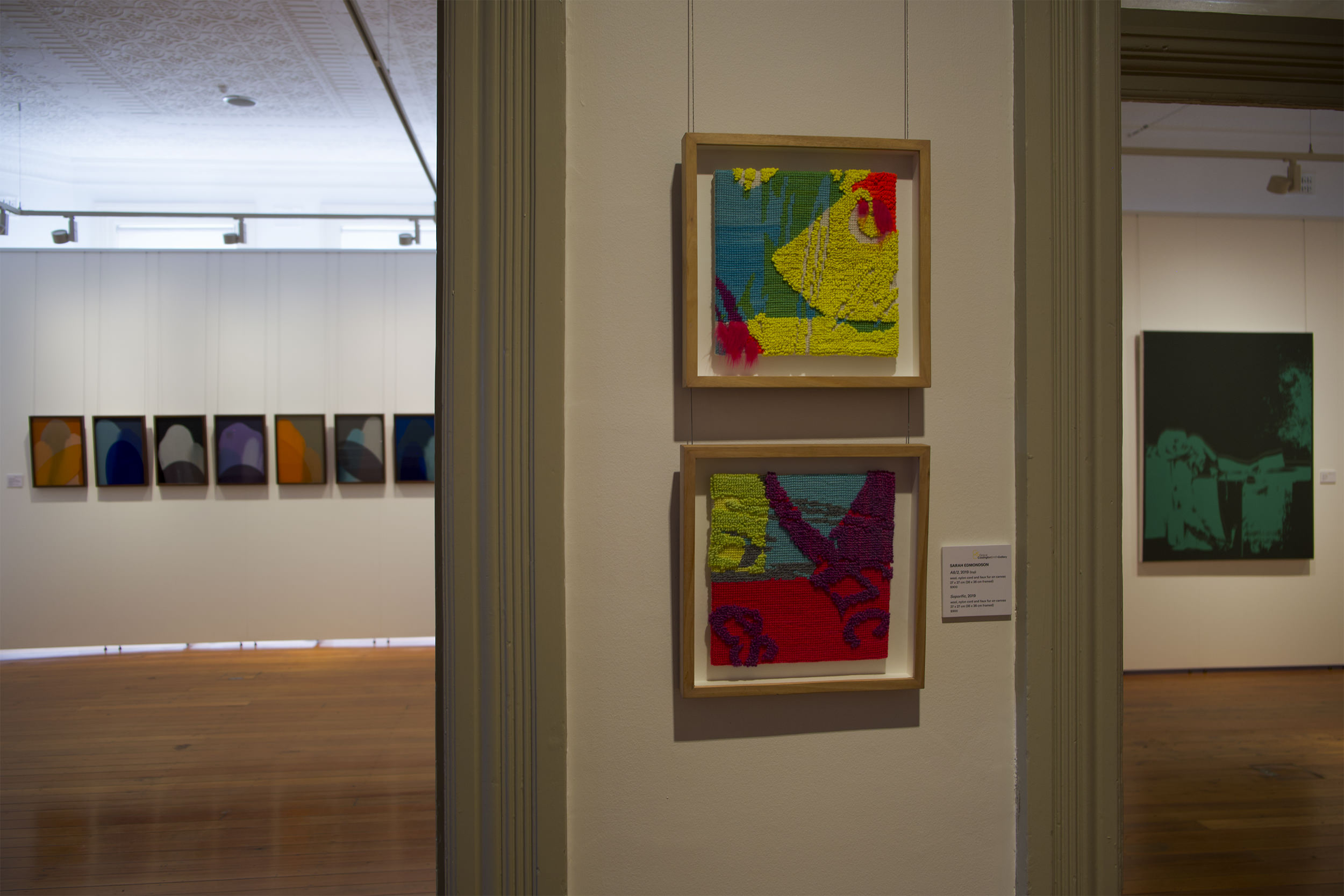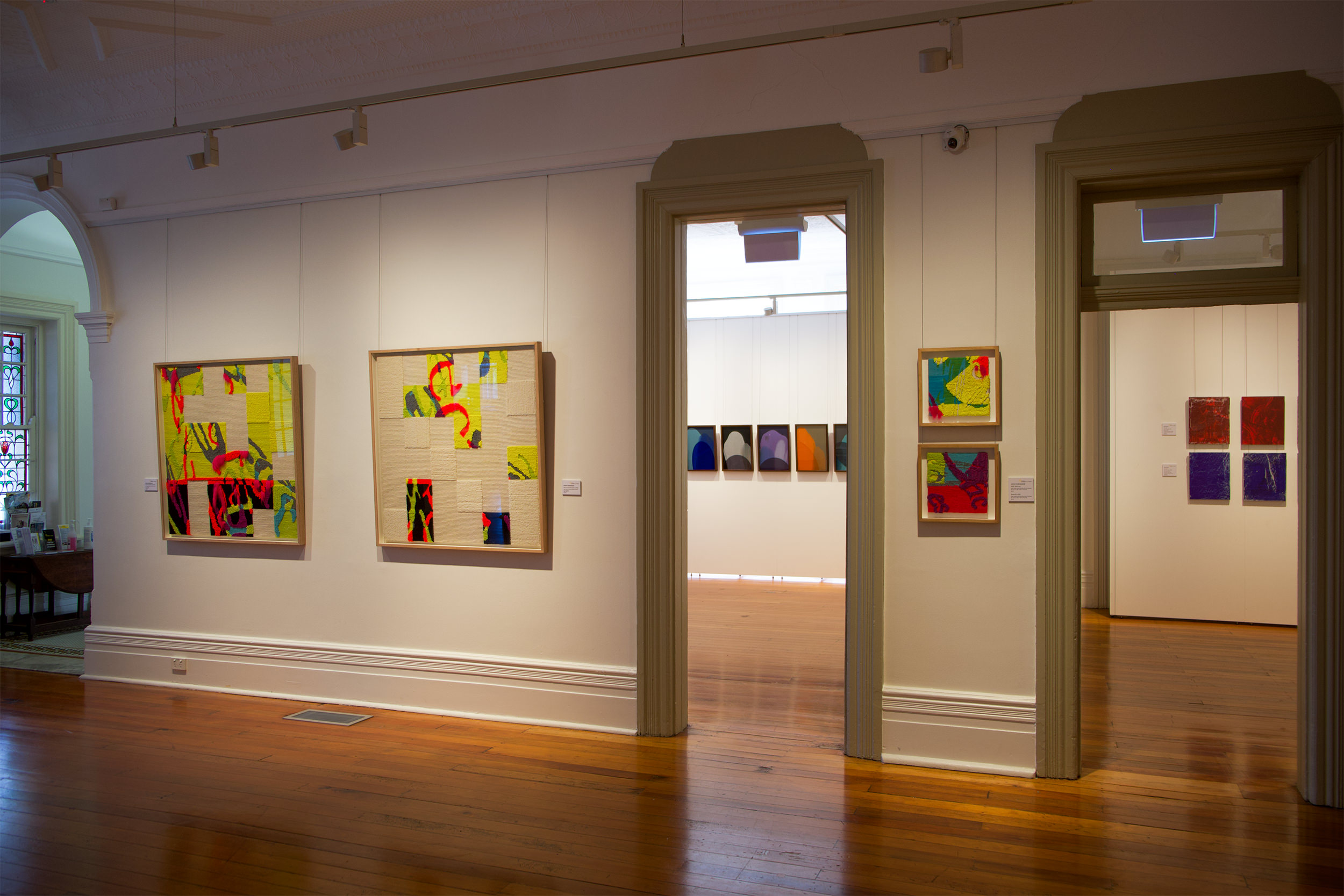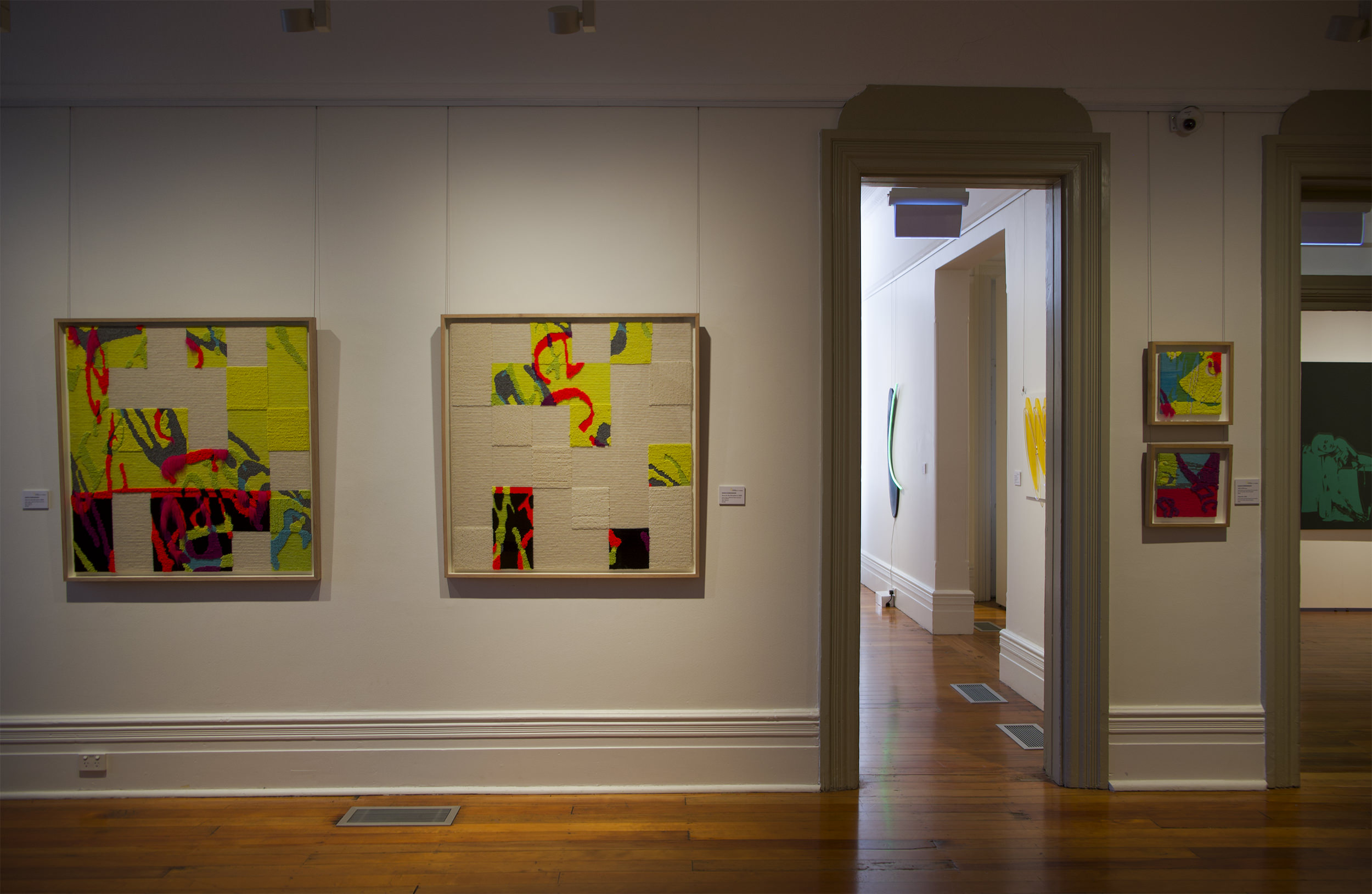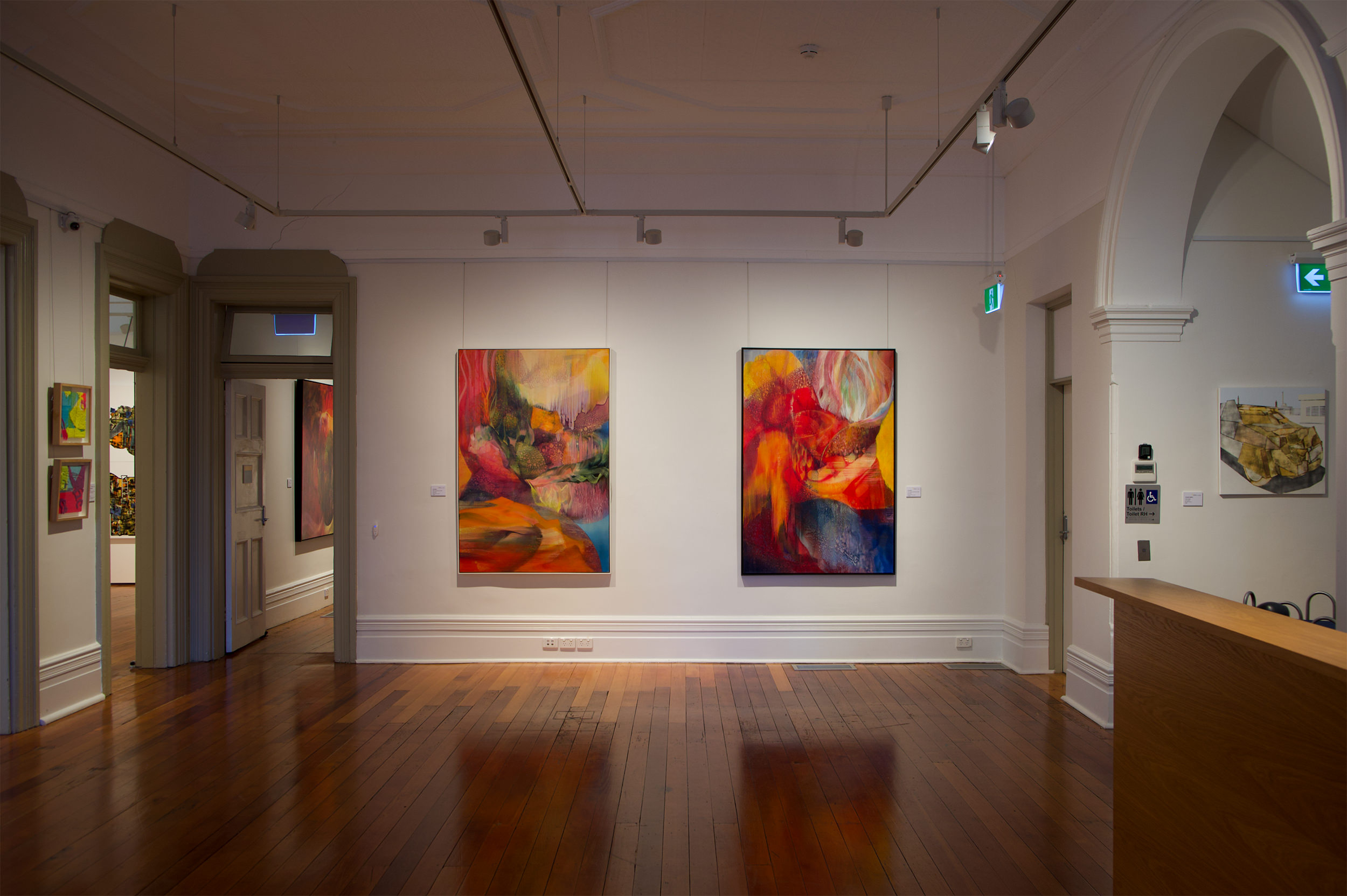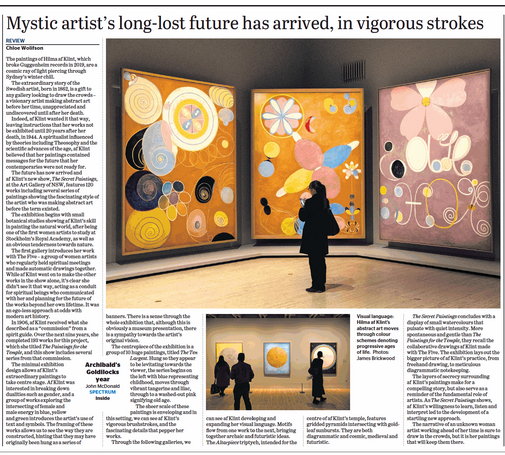In 2020, I was commissioned to write a story on artists’ studios in Sydney – a snapshot of group studio settings amidst the pandemic year. Unfortunately the shifting sands of the pandemic publishing landscape meant that it never made it to print. While some of the setups described have since changed, the way artists work is of enduring interest to me, and I hope others too, so I have given the piece a belated lease on life below. The many artists and arts workers quoted in this story gave generously of their time and thoughts for this story and I thank them for that.
Long before co-work settings were trendy, artists and their
supporters were establishing shared work environments. For many artists,
working from home isn’t a viable option. Space is limited; materials can be
toxic. While some artists are in a position to work in a private studio, for
many, a space within a communal studio setting is the happy medium.
For Penrith-based artist Kirtika Kain, whose work responds
to historical texts, her residency at Parramatta Artist Studios (PAS) has presented
an opportunity to share ideas with fellow Western Sydney artists. “We
are all focused artists and from such an array of global communities; although
our practices are so diverse, we have found unique connections,” she says.
“There is a camaraderie without a hint of competitiveness.” Kain is one of
20 current studio artists across City of Parramatta Council’s studios, describing
it as “a textbook residency… in allowing us the space to be alone and
connected,” and facilitating her transition from student to fulltime
artist. “[C]urators I only dreamed of meeting have come through our doors.”
“Without a significant exhibition venue in the Parramatta
region to this day, Council recognised a significant gap in supporting local
artistic practice and local culture, and so strategically decided to support
the making of art,” explains Director of PAS Sophia Kouyoumdjian. As well as
the sense of community fostered in the studios, PAS artists’ work is included
in exhibitions further afield, including an annual exhibition at Artspace in
Woolloomooloo (which also hosts its own studio program), the two-part survey
show New Sacred at Mosman Art Gallery (2018 and 2022), and many
partnerships with regional galleries.
Established in 2006 in the Parramatta CBD (where Kain is
currently in residence), PAS branched out to a new space in Rydalmere in 2019.
The larger Rydalmere studios situated in a light-industrial area allow artists
to experiment with material and scale “in ways we have never witnessed before
at PAS,” Kouyoumdjian says.
Carriageworks resident artist Dean Cross also appreciates
the opportunity to branch out in scale. Cross moved from Canberra to become a
resident of The Clothing Store Artist Studios, a building close to
Carriageworks which the Redfern multi-arts centre leases from Infrastructure
NSW. It’s Cross’s first studio experience. “Because the studios are so luxurious
– it’s bigger than my apartment – I’ve been able to work at a scale that I’ve
never been able to work at before,” Cross explains. “It’s changed how I can
look at my work and I’m incredibly grateful to have been here and even for it
to have been extended because of Covid.”
The impacts of the pandemic have been mixed. “When I first
came back into the studio [after lockdown] in some ways it was a positive,
because I had…fresh eyes on all these half-baked ideas that I’d left when the
doors got locked,” Cross recalls. However, he did find it difficult to regain
the momentum of a regular studio practice. “[I]t took a little while to find
that flow again, and…I couldn’t remember where I’d put my scissors.”
Cross is not alone in having his studio practice interrupted
by the pandemic. At Crows Nest-based Studio A, a supported studio for artists
living with intellectual disability, 17 represented artists share a communal
space, a setup which has posed challenges during Covid-19. As CEO and Artistic
Director Gabrielle Mordy explains, a full-time online program was created in
the space of a week, a process which involved navigating variables such as
group homes and limited internet experience. With some artists continuing to
work in the studio and others discovering they prefer to work from home, the
whole studio currently connects daily via video calls and has also continued
their daily dance sessions this way.
In non-pandemic times, Studio A’s resident artists work in a
single shared space, using mediums including digital art, painting, drawing and
textiles – the studio contains several looms and sewing machines. The studio evolved
out of a recreationally-focussed program, and aims to provide opportunities for
artists living with intellectual disability to be involved in mainstream art
networks. This has led to many collaborations which often include access to the
more extensive studio resources of other artists.
Studio A’s original location in Hornsby proved to be a
barrier to resident artists in accessing Sydney’s broader contemporary art
world, and while their current location is an improvement, the studio is on the
hunt for larger, more central, accessible yet affordable premises near a transport
hub, with a gallery to promote greater visibility of artists work to
passers-by.
This lack of affordable, suitable artist studios in Sydney
is not unique to Studio A, and organisations like Brand X have addressed the
issue by working with developers, landlords and local councils to repurpose
empty spaces for cultural practitioners (they currently manage a Creative
Precinct at St Leonards, and the City of Sydney’s live/work tenancies in inner
Sydney).
Art collectors Teresa and Andre Biet have also made an
impact on the issue of affordable studios, establishing Shirlow Street Studios
in 2019. The couple, whose program Art Incubator provides exhibition and
mentorship opportunities to emerging artists, purchased and renovated a former
olive processing facility in Marrickville, incorporating a design studio and
workshop on the ground floor, and eight artist studios above. Resident artists
are chosen across various stages of their careers in order to develop
mentorships between emerging and more established artists, and studios were
designed without doors, the open access promoting “exchange and conversation
particularly when problem solving about a technical aspect of their practice,” Teresa
Biet notes.
In nearby St Peters at Orange Tongue Studios, the same no-door
approach also applies, with artists sharing tools and tips and occasionally
posing for their studio neighbours. Except for artist Floria Tosca, who joined last
year, all of the current eight occupants have been at Orange Tongue since it
was established in 2017. Tosca, whose practice includes painting and drawing,
felt that the space was right for her as soon as she entered the building.
“[T]here’s a camaraderie [and] generosity…not just in making
the work, but also in supporting each other in showing it, and…when people are
going through difficult times.” With many artists having exhibitions cancelled
this year, the supportive studio environment has been crucial. Artists Jonathan
Dalton and Giles Alexander set up Orange Tongue (named after the material they
used to build the walls) when their previous studios were demolished to make
way for the Metro. “We couldn’t find a space adequate to our needs, so
we leased a warehouse and purpose built the space,” Dalton explains.
Artists Consuelo Cavaniglia and Brendan van Hek, who work in
materials including mirror, Perspex and neon, also struggled to find an appropriate
studio space after relocating to Sydney from Perth in 2012. “[T]he rents were
astronomical and the spaces tiny! It was quite alarming – at one stage we were
shown a space in a building in Camperdown that was literally a section of a
hallway and it was $250/week,” Cavaniglia recalls. After spotting a ‘For Rent’
sign in a derelict-looking building in Marrickville, they discovered a “huge
space with the best light. It’s a rare gem.”
Five years after moving in, Cavaniglia and Van Hek also took
over the lease of the neighbouring unit and were joined by artists Gemma Smith
and Grant Stevens. (Smith’s dog Puffin is a recent addition to the studio
family.) “[T]he only
drawback to the space is the ordeal of taking things up and down a fairly tight
set of stairs,” notes Cavaniglia. “On occasion we’ve had to lower works out of
the loading windows down the side of the building onto the road – it’s a pretty
impressive effort and the people in the factory across the road will often drop
tools and come and help out with the more precarious manoeuvres.”
Back over in St Peters in an old brick factory on the Prices
Highway is a creative industrial space that defies traditional notions of the
artist’s studio. Tortuga Studios was established in 2008, evolving from an
earlier studio in Turrella. Managed as a not-for-profit incorporated
association, Tortuga boasts 21 studios, a large gallery space (which in
non-pandemic times is home to year-round exhibitions and events), photographic
studio, kiln, hot-desks, a multi-purpose inner laneway, and a set-building
workshop large enough to house the set of the interior of an RFDS plane. Tortuga
is occupied by an extended family of creative practitioners including photographers,
writers, carpenters, metalworkers, riggers, bagmakers and a clown.
“We are artists, but we talk of ourselves in terms of our
cultural production,” Director of Tortuga Studios, H Morgan-Harris, explains.
“Cultural production and manufacturing [are] a vital element in the broader
entertainment industry, one of Sydney’s most dynamic sectors. The professional
expertise at Tortuga – across multiple disciplines – cannot be described in the
context of ‘artist studios’ solely. It is so much more than that. A number of
our tenants take on multi-million-dollar projects, work in an international
capacity and run creative crews of 40+ workers at a time.”
Tortuga is a particularly collaborative space with
history and experience anchoring its strong community. But whether occupied by
long-term residents or a rotating roster of artists, shared studios of all
kinds offer artists and creative practitioners support, connection and
solidarity. Conversations take place around meals and coffees, technical
questions are nutted out, there are formal and informal opportunities to
connect with others in the creative ecosystem, and, as Cross notes, “when you
just need that extra set of hands…it’s
as simple as knocking on a door.”
Chloe Wolifson, August 2020
